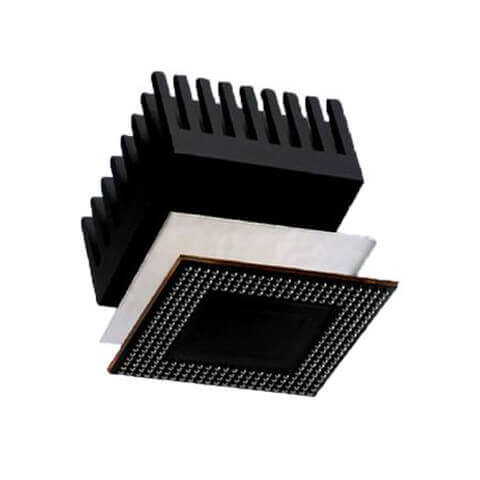How to sort and choose electronic adhesive
xinstJun 01, 2020
Electronic adhesive are an important classification of adhesives, mainly used for sealing, bonding, potting, coating, structural bonding, co-existing film and SMT patch of electronic and electrical components. So what are the classification of electronic adhesives? How should we choose different electronic adhesive?

1. Classification of Electronic Adhesives
Electronic adhesives for microelectronic packaging can be divided into two categories: semiconductor IC packaging adhesives and PCB board-level assembly adhesives according to the packaging form. Adhesives for semiconductor IC packaging include epoxy molding compound (EMC), LED encapsulating glue (LED Encapsulant), die glue (Die Attach Adhesives), flip chip underfills (Flip Chip Underfills), cofferdams and fillers (Dam and Fill Encapsulant). PCB board-level assembly adhesives include: SMT Adhesives, COB Encapsulant, FPC Reinforcement Adhesives, CSP / BGA Underfills, camera module Image Sensor Assembly Adhesives, conformal coating, and thermally conductive adhesive.
Electronic adhesives can be divided into thermal curing, UV curing, anaerobic curing, moisture curing, UV curing + thermal curing, UV curing + moisture curing and so on. According to the material system, it can be divided into epoxy resins, acrylates and others.
Adhesives commonly used in electronic manufacturing include epoxy resin, UV (ultraviolet) glue, hot-melt adhesive, solder paste, anaerobic adhesive, double-group adhesive, etc. Epoxy resins are generally cured at high temperature, and the bonding force after curing is large. It is widely used in the bonding of functional devices, underfill and other processes. In the electronics manufacturing industry, the manufacturers of epoxy adhesives include Loctite, a subsidiary of Henkel, Fuji, Japan, Huahai Chengke, Huitian, etc. UV glue is cured by ultraviolet light, its pollution is small, and it cures quickly. It is the most widely used in some fields such as encapsulated dispensing and surface dispensing. Currently, UV glue manufacturers include Henkel Loctite, Xinyou, Debon, Huahai Chengke, Hestic Wait. In the chip packaging, the bonding power, thermal conductivity, thermal resistance and other requirements of the glue for the glue are all required. In the chip packaging, especially the LED chip packaging, the US Dow Corning glue is the most widely used. Changxin, Debang, Xindongbang and other companies are also investing in the development and production of special chip fixing glue to replace foreign products. Hot melt adhesives are structural PUR glues, which have the characteristics of low-temperature natural water vapor curing, fast curing, non-toxic and non-polluting. Due to their unique advantages, they are gradually replacing other types of glue. xinst etc.
2. Factors to be considered when choosing adhesives
Important properties of adhesives include rheological properties (viscosity, thixotropy, collapse resistance and tailing, storage period / condition and effective life) and mechanical properties (viscosity, mechanical strength and heat resistance, curing cycle, electrical properties) Stability, etc.).
(1) When choosing an adhesive, first ensure compliance with environmental protection requirements, and then consider the performance of the adhesive in three aspects: pre-curing performance, curing performance, and post-curing performance.
(2) Because the two-component adhesive needs to be mixed to the proper ratio at the right time, which increases the difficulty of the process, the single-component system should be preferred.
(3) It is better to choose a colored adhesive that is easy to distinguish from green oil and circuit board materials, because you can quickly find out whether there are missing parts, the amount of glue, whether the pads / components, empty glue, etc., are easy to control the process; Red, white and yellow.
(4) The adhesive should have sufficient viscosity and humidity to ensure that the components and circuit board are firmly bonded before the adhesive is cured. Both usually increase with viscosity. Highly viscous materials prevent components from moving during circuit board placement and transfer.
(5) For the printing process, the adhesive should have good collapse resistance after coating to ensure good contact between the components and the circuit board. This is especially important for components with large supporting heights such as SOIC and chip carriers. Adhesives with good thixotropy usually have a viscosity range of 60 to 500 Pa · s. High thixotropy helps to ensure good printability and consistent stencil printing quality.
(6) For the printing process, the adhesive should be able to be exposed to the air for a long time and is not sensitive to temperature and humidity. For example, some new adhesives have a printing life of more than 5 days, and the remaining adhesives in the printing process The material is stored in a container and can be used again.
(7) Adhesives that can achieve proper joint strength in a relatively short time and at a low temperature should be preferred. The curing time and curing temperature of better adhesives are generally 30-40 s, 120-130 ℃. The strength before and after soldering should be sufficient to ensure that the components are firmly bonded and have good heat resistance, and have sufficient adhesion to withstand the shearing effect of the solder wave. The temperature should be lower than the temperature at which the substrate and components of the circuit board may be damaged, and usually lower than the glass transition temperature of the substrate. This temperature is preferably 75 to 95 ℃. If the connection strength is too large, it will be difficult to repair, but if it is too small, it will not be fixed.
The types and choices of electronic adhesives are as above. You can choose different characteristics of electronic adhesives according to different situations and different needs to make it play its greatest role.


